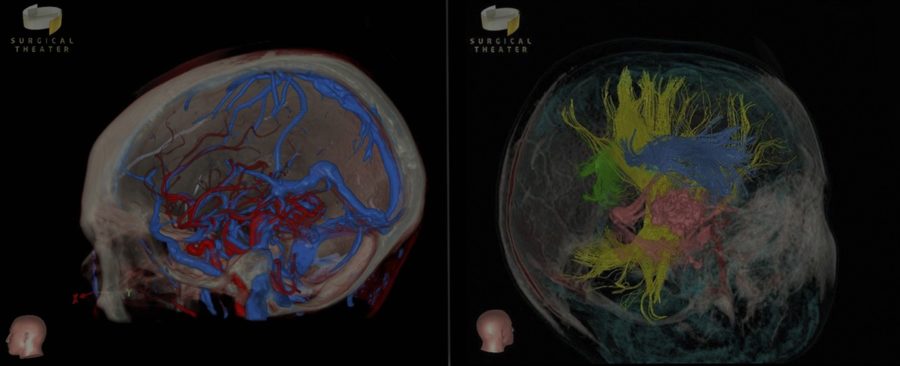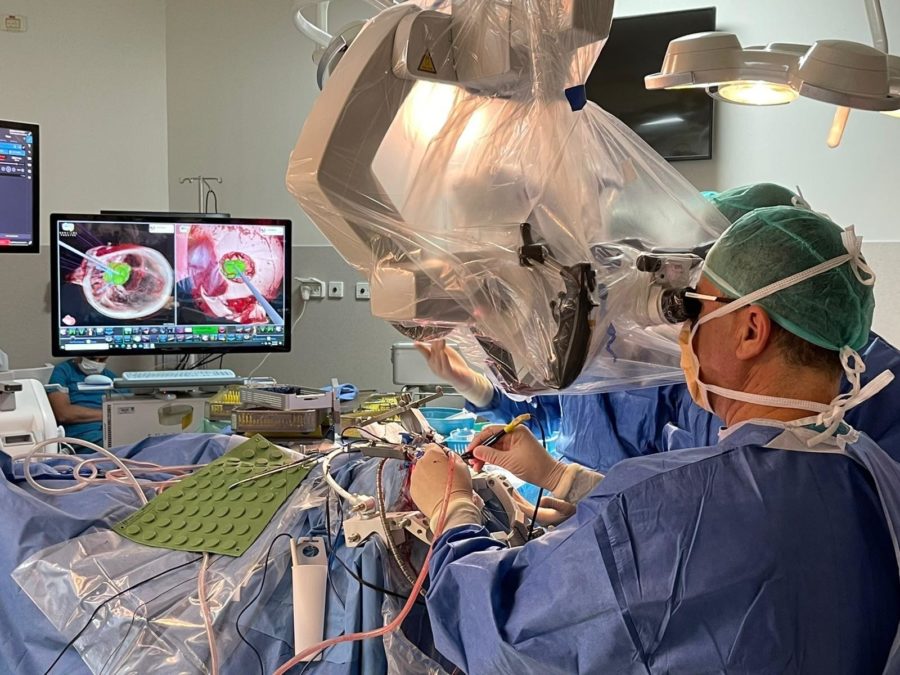
September 21, 2021 – Surgical Theatre, a provider of a extended reality (XR) medical visualization platform for surgical training, has announced that its 360° virtual reality (VR) models have been used to assist doctors at Soroka Medical Center in Israel to perform complex surgery to separate conjoined twins born fused together at their head.
The patients were 1-year-old partially craniopagus twins that had been conjoined at the back of their heads, facing away from one another. Surgical Theater 360° VR models provided advanced insights to analyze critical blood vessels and plan for the end goal of separating the twins in the safest, and most anatomically normal repositioning as possible.
Commenting on the high-risk, complex nature of the surgery, Dr Mickey Gideon, Director of Neurosurgery at Soroka Medical Center, said: “This is a rare and complex operation performed so far in the world only about 20 times, and for the first time in Israel.”
During preoperative surgical planning, the team of surgeons were able to review a rendered 360° VR model and found they were able to best visualize the major veins surrounding the surface of each patient’s brain, according to Surgical Theatre. A major vein that brings blood from the brain back to the heart of Patient 2 laid at the exact center of where the twins were fused – a fact that surgeons knew prior to using Surgical Theater’s virtual modeling. What was not known previously, however, were the paths and junction points of the smaller, but still critical veins that lay within the fusion region. With Surgical Theatre’s 360XR model, surgeons were able to intimately analyze and understand the location of a shared vein.
Surgical Theatre stated that as a result, virtual modeling allowed for increased understanding of the abnormal structure of part of Patient 2’s brain. The surgeons noted that the virtual imaging provided them with an ideal tool to visualize the anatomy, something that the 2D traditional CT imaging alone was not able to provide.
“Using Surgical Theater’s VR model, it was possible to simulate the analysis and the anatomy for the operation, and to prepare for it accurately. The system helped us to better understand the surgical field, to examine the anatomical structures and the relationship between them, and to plan the operation in the best possible way,” said Dr. Gideon. “During the operation itself, the Surgical Theater system gave us advanced and comprehensive knowledge of the patients’ anatomies through the use of integrated real-time navigation. It made it possible to see the shared blood vessels, visualize the connections between them and carry out the procedure based on our preoperative surgical analysis and simulation of the optimal approach.”
When paired with intraoperative neuronavigation, Surgical Theater’s 360° VR model was able to provide surgeons with the necessary visualization tools from start to finish. With the virtual mapping — the same virtual craniotomy and incisions from the preoperative planning, simulated dissection paths, and other critical structures were tracked in real-time during the actual operation. Additionally, it allowed surgeons to see and avoid blood vessels.
“Utilization of virtual reality models is the next stage for planning of operations in this current day and age, and even more so for complex surgeries like this”, Dr. Gideon concluded.

Kate Reed, Chief Customer Relations Officer of Surgical Theater, adds, “we are very honored and proud to be able to help in this historical case. Our technology transcends visual limitations by providing surgeons insights they normally would not have. And because of this, we have helped give these two extraordinary twins a chance at a full, independent life. And for the first time, they can now see each other face-to-face.”
Extended reality is often used as a tool to help connect people who can’t be together, but rarely has it been used to assist two individuals who are so physically close to one another that they are unable to actually see each other face to face in real life. As the technology advances alongside medical science, it seems more likely that surgical procedures that emerge in the future will include XR technology as a necessary feature.
For more information on Surgical Theatre and its XR solutions for medical visualization, please visit the company’s website.
Image credit: Surgical Theatre
About the author
Sam is the Founder and Managing Editor of Auganix. With a background in research and report writing, he has been covering XR industry news for the past seven years.
